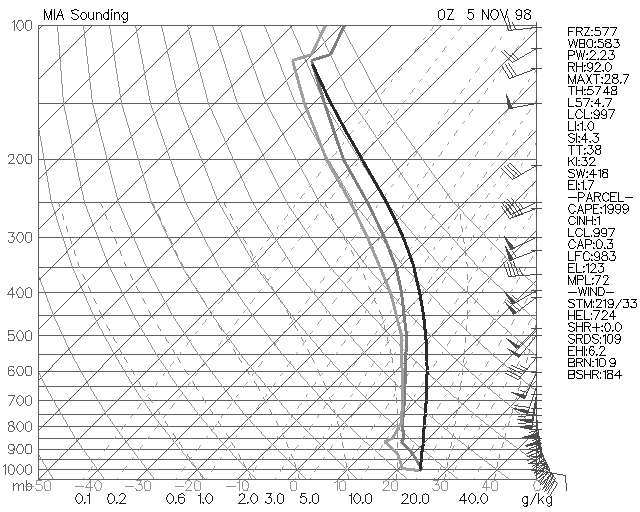
The dew point is the temperature at which the air is saturated with respect to water vapor over a liquid surface. When the temperature is equal to the dewpoint then the relative humidity is 100%. The common ways for the relative humidity to be 100% is to 1) cool the air to the dewpoint, 2) evaporate moisture into the air until the air is saturated, 3) lift the air until it adiabatically cools to the dew point. The frost point is the temperature at which the air is saturated with respect to water vapor over an ice surface. It is more difficult more water molecules to escape a frozen surface as compared to a liquid surface since an ice has a stronger bonding between neighboring water molecules. Because of this, the frost point is greater in temperature than the dew point. This fact is important to precipitation growth in clouds. Since the vapor pressure is less over an ice surface as compared to a supercooled liquid surface at the same temperature, when the relative humidity is 100% with respect to water vapor the relative humidity over the ice surface will be greater than 100%. Thus, precipitation growth is favored on the ice particles. The frost point is between the temperature and dewpoint. Knowing this is important when examining Skew-T soundings in a subfreezing layer. Examine the sounding below. Notice the temperature and dewpoint traces gradually diverge from each other with height even though the entire troposphere is saturated. Soundings assume there is no ice present (only supercooled water). One reason the lines diverge is because the sounding is only showing the dewpoint. If the frost point trace was drawn, the temperature would be closer to the frost point than it is to the dewpoint in the middle and upper troposphere where subfreezing temperature occur. At 0 C, the dew point is equal to the frost point and this can be seen on the sounding by noticing the temperature is equal to the dew point in the saturated air where the sounding temperature is 0 C. 
|